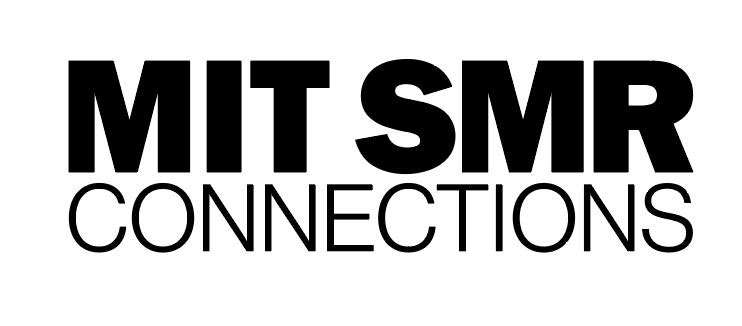You can now work at your job for years without ever meeting your boss in person. What will that mean for career advancement in a remote-work future?
In 2020, almost 50 percent of the workforce in the United States and the United Kingdom migrated from in-office to remote work, leading to a surprising result—advancement went down.
According to a 2021 survey of 2,000 employees, just 24 percent received promotions, roughly half the amount of 2019. As businesses lean into remote and hybrid work, this trend leads to an important question: What’s the future of getting ahead in the virtual office?
The answer isn’t simple. One reason promotions were down in 2020 is that the pandemic dried up revenue streams. Cash supplies were limited and employee raises jettisoned to keep businesses afloat. It isn’t yet clear how much things rebounded in 2021. But larger forces are in play that make getting ahead at work difficult. Corporate structures continue to flatten, a shift augmented by the transition to remote work. As teams become more project driven, more collaborative, and less hierarchical, some managerial positions have been streamlined—i.e., axed. That heightens competition among those who remain. Promotions require vacancies, and there aren’t many of those in high-level positions, which are often held by Baby Boomers who aren’t stepping down at the moment.
The situation is poised to change soon, however, and could lead to an entirely new approach to promotion. As Boomers age out of their jobs and the economy gets going again, opportunities to scale the corporate ladder will return. But in a changed landscape dominated by flatter corporate structures, there will be new rules for how to do so. Tip one for aspiring managers: Demonstrate your capacity to organize, manage individuals, and foster teams while working entirely remotely.
You can now work at your job for years without ever meeting your boss in person. What will that mean for career advancement in a #RemoteWork future?
Focus on the basics
In many cases, the best advice for climbing tomorrow’s corporate ladder will be a lot like yesterday’s: work hard, have integrity, be forward with your intentions.
But a few things require updating.
For starters, you’ll need to find strategies for being more productive at home. Create a dedicated work space, and make it comfortable with the same touches that you might use at the office: pictures, plants, art. Keep a regular schedule, even if your hours are irregular. Set hard boundaries on your day to combat burnout, and let your family or roommates know that certain blocks are for work only. Maintain personal relationships with colleagues via email, phone, and app. Make time for impromptu conversations by arriving at scheduled meetings five minutes early.
Personalize your (remote) workday
One study, from researchers at the University of California at Irvine, found that workers tend to switch between tasks every three minutes. Another found that employees rarely go longer than 11 minutes without a distraction. That’s 56 distractions in an eight-hour workday. The vast majority of these are trivial, and working remotely gives employees the power to reduce them. Take control of your environment by silencing the noise with a personalized schedule and by putting your phone away.
Take Goncalo Silva, the CTO of a remote-first tech company. He’s a night owl whose mind is engaged at 2 a.m., so he makes that time productive by writing and coding. Pick your most focused hours and allocate them to tasks that require deep focus. Block out the rest of your day for easier stuff like emailing or videoconferencing.
Keith Pearen, a remote project manager at a large energy firm, deals with distractions by shutting them out completely. Pearen is a morning person, but because some his colleagues work internationally, he must set regularly aside that time for in-office meetings with them and the full staff. That leaves afternoons for what he calls “real work.” To help him focus, Pearen brews a cup of tea. He turns off his phone. He refuses to look at email. And when he can, he schedules an hour for exercise beforehand. “That way, I clear my head on my bike or skis,” he says. “Then, when I come back to the office, I can focus solely on the task at hand.”
Remote communication requires intention
Pearen’s job is highly technical. He engineers the blades on wind turbines, a task that requires precision and coordination with dozens of engineers in a half-dozen countries. After COVID-19 forced his full team to go remote, Pearen and his colleagues chose online work practices that made their meetings more efficient than they were in the office. “I learned early on that I needed to focus deeply on communication for a couple hours a day,” Pearen says. Like a teacher preparing lesson plans, remote work showed Pearen that to maximize his team’s time, he needed to map out each meeting. That meant not just what needed to get done, but also the maximum time that could be spent on each item. “If I’m not ready, everybody’s time gets wasted,” he says. “Remote work demands that we all up our communication game.”
Digital watercoolers
With remote work, it’s unrealistic to expect conversations with colleagues or managers to occur spontaneously; it takes effort to get face time with decision makers. Build relationships by interacting in personal ways. Pick one or two higher-ups at your company, or at a competing company in your industry, and establish a monthly meeting. Ask for advice. How did you get your job? What tasks are most worth my energy?
Targeted networking pays off. According to a recent study, employees who built strong relationships with their seniors staff were 82 percent more likely to earn a promotion.
You are more than a talking head
With hybrid work models, employees must work hard to disprove the truism “Out of sight, out of mind.” Set a time every month to talk to your boss, and don’t be afraid to ask how you can be more useful. If you’re a recent hire, meeting colleagues while working remotely can be tricky, so ask your boss who else you should be collaborating with. Bottom line: You can improve quarterly performance reviews by making them monthly status updates in a conversation that lasts the whole year.
Come prepared to these meetings by keeping track of all the things you’ve accomplished since the last time you met. Managers prize integrity, so be honest with yourself about how well you performed. Identifying areas for improvement helps establish goals with demonstrable achievement. “Humility goes a long way in helping you move up in an organization,” says Bud Bilancich, an author and business professor at the University of Denver.
Have a goal in mind
This is true in both remote and in-office work, but these days most managers don’t have time to respond to all the email in their inbox. With a hybrid work model, it’s easier than ever to blend into the background, so you’ve got to make noise to get noticed. Take Ben Brooks, who is one level below C-suite employees at a risk-management and insurance company. “I didn’t wait to get tapped on the shoulder,” he says. “I told people the promotion I wanted, asked what I needed to do to get it, and then did those things.”Some things will forever be the same. But pay attention to what needs to change.





